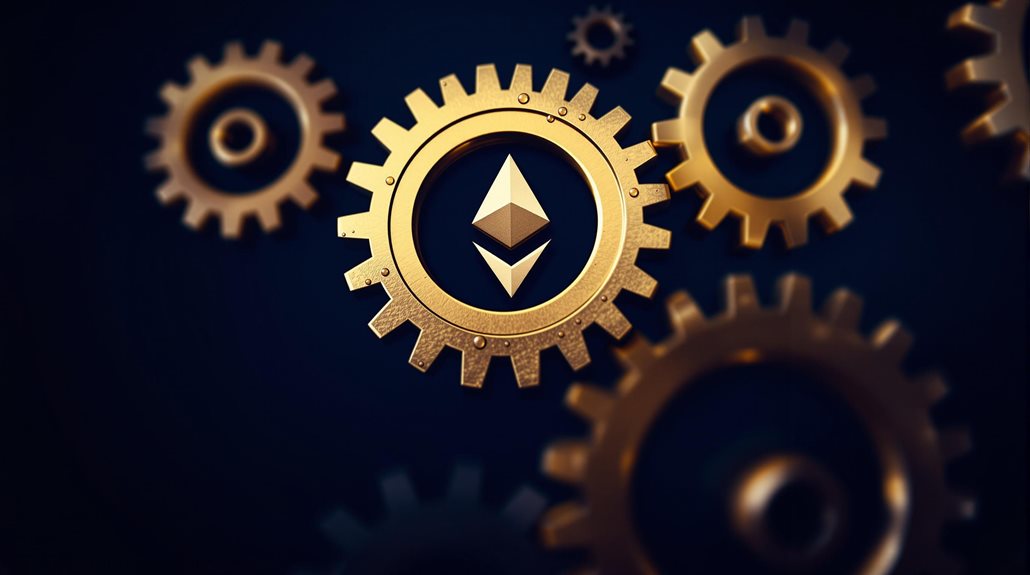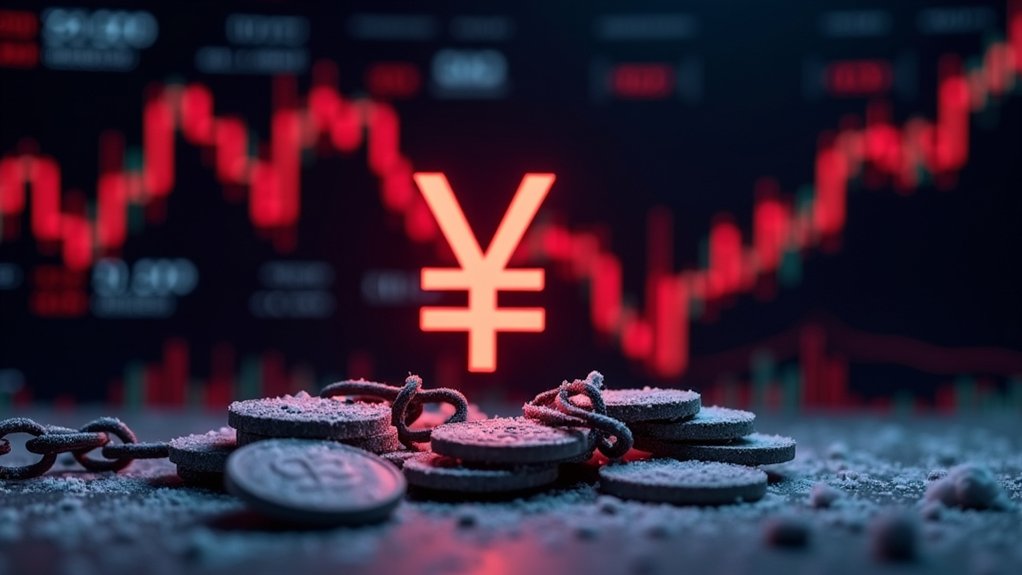A utility token is a digital asset that lets people access specific products or services on blockchain platforms. It’s like a digital ticket or key that opens features within decentralized apps. Unlike security tokens, utility tokens don’t represent ownership in a project. They’re typically created through token sales and can be used for payments, voting rights, and platform fees. The growing market for utility tokens reflects their crucial role in blockchain ecosystems.
Quick Overview
- A utility token is a digital asset providing access to specific products or services within a blockchain platform.
- Unlike security tokens, utility tokens do not represent ownership stakes but function as digital keys for platform features.
- Utility tokens are commonly used for platform payments, transaction fees, and governance voting rights.
- Examples include Ethereum (ETH) for gas fees and Binance Coin (BNB) for discounted trading fees.
- These tokens derive their value from their usefulness within specific ecosystems rather than representing investment securities.

A utility token is a digital asset that gives users access to specific products or services within a blockchain platform. Unlike security tokens, utility tokens don’t represent ownership or investment stakes in a project. They’re typically created through initial coin offerings (ICOs) or token sales, and they help encourage people to participate in blockchain networks.
These tokens work like digital keys or tickets that grant access to various features within a platform. They can be used as a form of payment for services, enable voting rights in governance decisions, or provide access to special platform features. Many projects use utility tokens to pay for transaction fees or computational services, and some offer discounts or rewards to users who hold their tokens. Unlike stablecoins, utility tokens are not pegged to external assets to maintain price stability. The market for utility tokens is experiencing rapid growth, with projections showing it will reach USD 13.20 billion by 2032. Market volatility can significantly impact the value and adoption of utility tokens. The successful implementation of network effects helps drive user adoption and platform growth.
Several well-known cryptocurrencies serve as utility tokens. Ethereum’s ETH token, for instance, is used to pay for gas fees when running smart contracts or making transactions. Binance Coin (BNB) lets users get discounted trading fees on the Binance exchange. Chainlink’s LINK token powers its decentralized oracle network, while Uniswap’s UNI token lets holders vote on important platform decisions.
Creating a utility token requires careful planning and implementation. Projects need to clearly define what their token will be used for within their ecosystem. They must design the token’s economics, including how many tokens will exist and how they’ll be distributed. Smart contracts play a vital role in this process, as they establish the rules and conditions for how the token operates.
Token developers have to make important decisions about supply mechanisms. Some tokens have a fixed supply that never changes, while others might have variable supplies that can increase or decrease over time. Many projects also include features like staking, where users lock up their tokens to earn rewards, or token burns, which permanently remove tokens from circulation to manage supply.
Utility tokens face less regulatory oversight compared to security tokens since they’re designed for platform usage rather than investment purposes. Their value comes from their usefulness within their respective ecosystems rather than from representing ownership in a company or project.
As blockchain technology continues to evolve, utility tokens remain an important tool for powering decentralized applications and services across various platforms.
Frequently Asked Questions
How Do Utility Tokens Differ From Security Tokens in Terms of Regulations?
Utility tokens and security tokens face different regulatory rules.
Security tokens are heavily regulated since they’re considered investments and must follow strict securities laws, including registration with authorities. They also require detailed financial disclosures.
In contrast, utility tokens face lighter regulation because they’re designed to access services rather than investments.
However, utility tokens can sometimes be reclassified as securities if they’re used like investments.
Can Utility Tokens Be Converted Directly to Fiat Currency?
Yes, utility tokens can be converted to regular money (fiat), but it’s not always a direct process.
Many cryptocurrency exchanges offer ways to convert tokens to dollars or other currencies. Sometimes, it requires multiple steps or using intermediary cryptocurrencies first.
The conversion process varies by platform and location. Some exchanges use peer-to-peer trading, while others offer automated conversion tools.
The ease of conversion depends on the token’s trading volume and market demand.
What Happens to Utility Tokens if the Platform Fails?
When a platform fails, its utility tokens usually face severe consequences.
The tokens’ value often drops sharply since they can’t be used for their intended purpose anymore. Trading activity typically slows down, and the tokens might become worthless.
Sometimes, the community tries to save the project, or another company might buy it.
In some cases, tokens can be moved to different platforms, but there’s no guarantee this will work.
Are Utility Tokens a Good Long-Term Investment Option?
Utility tokens can be risky long-term investments due to their volatile nature. Their value depends heavily on the success of their platforms.
While some tokens have shown impressive growth when their platforms succeed, many others have lost value when projects failed. They’re also subject to changing regulations and market sentiment.
Like any early-stage technology investment, they combine potential for high returns with significant risks of losses.
How Do You Determine the True Value of a Utility Token?
The true value of a utility token can be measured by several key factors.
It’s tied to how much people actually use the token in its ecosystem.
Token supply and demand play a big role – fewer available tokens with higher demand typically means higher value.
The project’s overall health matters too.
Things like active users, real-world applications, and the strength of the development team all affect a token’s worth.





